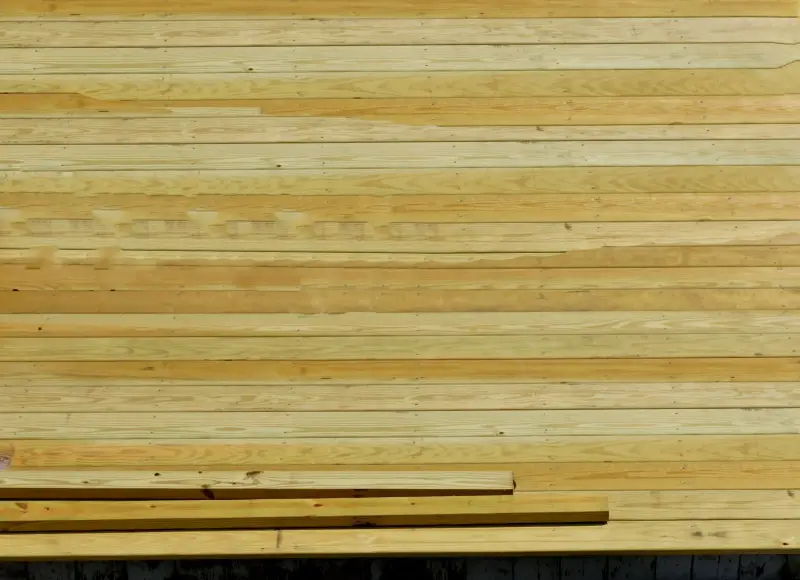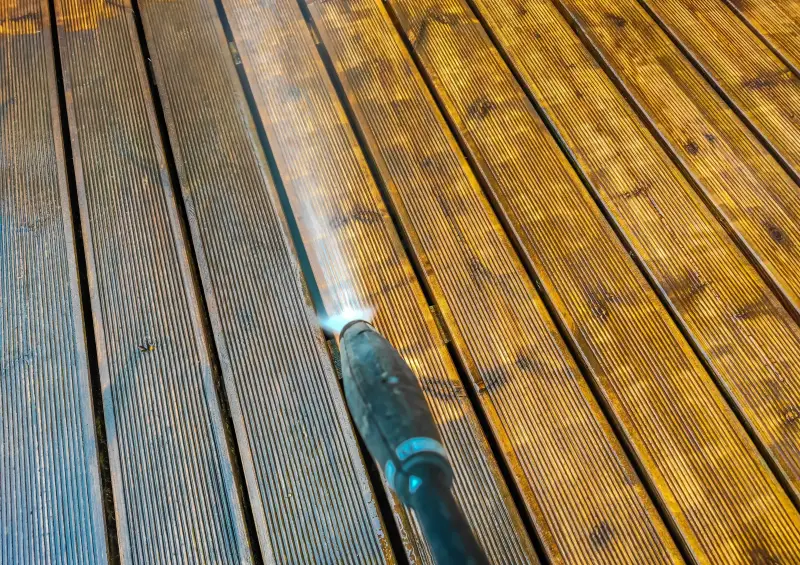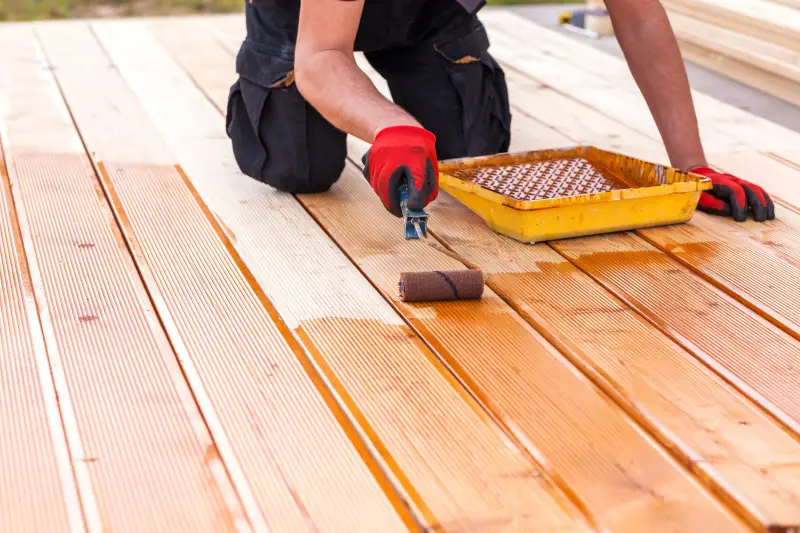Can You Paint Pressure-Treated Wood?

Although you can paint pressure-treated wood, stain will usually adhere better than paint does. The primary reason is that the preservatives in pressure-treated wood make it harder for the paint to bond to the wooden surface. But don’t worry, it’s still possible to paint your deck or fence if you take the proper precautions.
Keep in mind that wood that has been pressure-treated needs to be completely dry so it can absorb the paint or stain.
For a long-lasting and great-looking finish, first evaluate the wood’s moisture content, then apply the correct stain or primer and paint.
Read on to learn more about staining and painting pressure-treated wood:
- How to paint pressure-treated wood
- How to stain pressure-treated lumber
- FAQs about painting pressure-treated wood

How to Paint Pressure-Treated Wood
Pressure-treated wood is injected with a solution of water and chemical preservatives to make it more durable and resistant to decay, mold, water damage, and insects. This type of wood works best in outdoor settings such as on decks and fences.
Pressure-treated wood needs time to dry out before it’s painted, which takes a lot longer than kiln-dried lumber does. If you just purchased treated wood from the hardware store, chances are it’s still too wet to paint.
If the water beads up on the surface, it needs time to dry. Pressure-treated lumber can take three to four months to dry, so don’t rush the process. Once the wood absorbs water on the surface, it’s ready for paint.
Make sure to use the correct type of paint and primer on your wooden surface. Your local Five Star Painting® experts recommend priming with a latex primer and a compatible exterior latex paint, also known as water-based paint. Do not oil-based paint because it does not adhere well to pressure-treated wood.
Follow the steps below for painting pressure-treated wood.
Prepping Pressure-Treated Wood
- Prepare the area by cleaning it with soap and water to remove dirt and debris.
- If the item to be painted is in poor shape, use a commercial deck wood cleaner and a pressure washer if necessary. Let the wood dry for at least 24 hours before you paint it.
Painting Pressure-Treated Wood
- Once the wood is ready, brush, roll, or spray on the primer.
- Allow the primer to cure for the time specified by the manufacturer. Follow up with a coat of exterior latex paint.
- Apply at least two coats of paint. Follow the recoat time window specified by the manufacturer, which is typically a few hours.
The above will take time and patience, so don’t rush the process and contact a professional for assistance. For more tips, check out our blog post on how to paint a deck the right way.
How to Stain Pressure-Treated Lumber
Stain is usually the preferred way to finish pressure-treated lumber because it soaks better into the wood and is easier to apply than paint is. However, there are fewer color options available, and stain won’t fill in small cracks in the wood as paint will.
How to Stain Pressure-Treated Lumber
Stain is usually the preferred way to finish pressure-treated lumber because it soaks better into the wood and is easier to apply than paint. However, there are fewer color options available, and stain won’t fill in small cracks in the wood as paint will.
Follow the steps below for a successful stain application.
Prepping Pressure-Treated Lumber
- Wash the wood with a deck cleaner and scrub it with a brush while wet. It’s best to use a pressure washer if the surface has tough set-in stains.
- Allow the cleaning solution to soak into the wood for about 10 minutes or according to manufacturer specifications. Then rinse the area with a garden hose or pressure washer.
- Give the wood at least 24 hours to dry before applying stain.
Staining Pressure-Treated Wood
- Stain the area using a paint pad applicator instead of a brush for easier application. An oil-based semi-transparent exterior stain is best to decrease chipping, flaking, and cracking.
- Use a paintbrush to stain in cracks and problem areas.
- Typically, one coat of stain is needed to achieve the desired outcome.
- Stains need 24 to 48 hours to dry, so do not allow anyone to touch the surface for that period.
FAQs about Painting Pressure-Treated Wood
1. How long should you wait before you paint pressure-treated wood?
If the wood repels water, then you should wait three to four months for moisture levels to go down in pressure-treated wood, and it’s ready for painting. Treated wood is ready to paint when it absorbs water instead of repelling it.
2. What paint will stick to pressure-treated wood?
Water-based exterior latex paint will stick to pressure-treated wood, but we advise priming with a latex primer first.
3. Can you paint directly on pressure-treated wood?
Although you can paint directly on pressure-treated wood, it’s best to apply a protective layer of primer to increase the absorption and longevity of the wood.
4. Do you need to seal pressure-treated wood before painting?
Typically, it’s not necessary to seal pressure-treated wood before painting it with water-based exterior latex paint, but we advise doing so to protect it from water damage and other potential problems.
Call Five Star Painting For Need Professional Help
The above steps take a significant amount of effort and skill, and if you make an error, you will need to start the process from the beginning. Avoid these difficulties by contacting your local Five Star Painting for exceptional results. Our professional fence painting and deck staining services will give your space the makeover it deserves. Give us a call or request a free estimate online to protect your fence or deck for years to come.
 Click to call
Click to call


